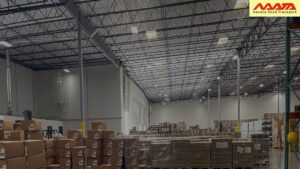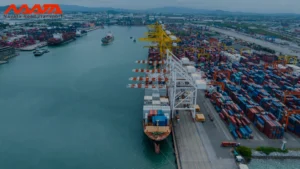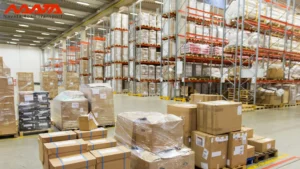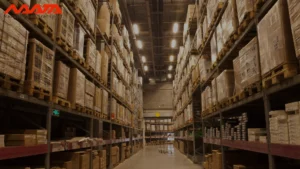
What Is Fleet Utilization – Importance, Key Metrics, Role & Benefits.
Table of Contents
What Is Fleet Utilization?
Fleet utilization measures how effectively a fleet of vehicles is used. It is usually reflected as a percentage, showing the time during which vehicles are active and put to productive employment in carrying out the business compared with inactive and unengaged vehicles. High fleet utilization would lead to excellent vehicle usage and, finally, good profits for the company.

Importance of Fleet Utilization
Businesses have an intense desire to use their fleet effectively, right from the view of minimizing costs, operational performance, management of resources, and maintenance of financial health to environmental sustainability. High fleet utilization maximizes benefits accrued to vehicle investments by reducing vehicle maintenance and insurance cost since fewer losses will be experienced when vehicles are not idle.
Utilization of fleets effectively improves business productivity, as fleets will be involved in carrying out business activities and offering quality service, hence meeting the increasing demands of customers. That means that with good fleet utilization knowledge, one can work out the best number of vehicles needed without creating unnecessary costs or a shortfall in the number of vehicles, and with adequate planning on a maintenance schedule, it can avoid disruptions to operations.
High utilization means high revenue generation because the fleets are there to contribute directly to the bottom line. Better investment decisions about purchasing or retiring vehicles will be made. In terms of the environment, better utilization improves fuel efficiency and helps meet regulatory standards by reducing emissions.
It creates data for making strategic decisions, like route optimization and fleet expansion, which, in effect creates a competitive edge through cost-efficient operations. Last, but not least, effective fleet utilization ensures reliable, timely delivery of goods and services, leading to greater customer satisfaction and enabling businesses to respond promptly to market alterations and customers’ demands.
Key Metrics In Measuring Fleet Utilization
Vehicle Utilization Rate
The Vehicle Utilization Rate measures the percent of time vehicles are in active use compared to the total available time. This is calculated by finding the ratio of the total time the vehicle spent operating in use to the total time in which the vehicle was available. The performance of this measure explains how frequently the vehicles undergo usage, and it detects underutilization problems, thus indicating better utilization of resources for the higher cases.
Mileage Utilisation
The distance that is covered by vehicles over a certain period compared to the maximum possible distance. It is used to scrutinize operational efficiency as to whether the vehicles are covering enough ground to recoup the cost, and high mileage utilization indicates a business that is using the car for active contribution.
Capacity Utilization
This points to the carrying capacity of the fleet used and how effectively it is used if the vehicle transports goods or passengers at capacity near maximum. The actual load carried is divided by the maximum load capacity and then weighted by 100 in percentage terms. High capacity utilization leads to effectiveness in the use of vehicles and minimizes the number of trips made or operational costs. This affects the bottom line, as when some more goods can be booked in one trip, the revenue increases.

Role of Fleet Utilization In Fleet Operations
In the context of fleet operations, the understanding and optimal use of all vehicles involved is called fleet utilization. That means understanding the deployment patterns and sources of inactivity and ensuring that all vehicles are applied to deliver their highest value and efficiency. Effective utilization of a fleet shall drive down operational costs and improve service delivery and overall performance of the fleet.
Benefits of Fleet Utilization
There are many advantages to maximizing fleet utilization, from cost reduction and increased service quality to environmental gains.
Maximizing Vehicle Use
For starters, maximizing vehicle use and full load factors helps to lower idle, maintenance and fuel costs. Fleet utilization results in more miles per day, less fuel burned for the same mileage, and fewer overall operating costs.
Customer Satisfaction
Maximizing fleet utilization can improve service quality and customer satisfaction. Fully optimized vehicles help you arrive on schedule to deliver, which means shorter delivery times and satisfied customers. Increased on-time deliveries also build trust and loyalty from your customers, which is great for business.
Vehicle Life & Environment
Finally, maximizing fleet utilization helps to increase asset life, by decreasing the rate of wear on your vehicles. Fully loaded and well-maintained vehicles are subject to less mechanical stress, which over the life of the asset can mean fewer mechanical failures and related repair costs. The reduction in vehicle stress also has positive environmental implications.
With less idling, meandering and double-tracking, fleets produce fewer emissions and greenhouse gases, resulting in cleaner air and a reduced carbon footprint. Additionally, you can reduce the overall number of vehicles needed to do the same amount of work, which means less emissions and less traffic on the streets.

Conclusion
Optimizing fleet utilization plays a very crucial role in any business. It allows you to get the maximum out of your vehicle by putting it on road and making it earn for you. Optimizing fleet utilization reduces the overall operational cost like vehicle maintenance, fuel cost etc. and also keeps the customers satisfied by delivering the goods on time and gaining their trust.
Proper maintenance of vehicle increases its life and reduces emission resulting in less pollution and cleaner environment. So, optimizing fleet utilization saves operational cost, increases life of vehicle and reduces pollution, thus, benefiting both the business and the world we live in. Isn’t it benefited a lot with optimizing fleet utilization?
Thanks For Reading: What Is Fleet Utilisation?
Powered By 360Presence








